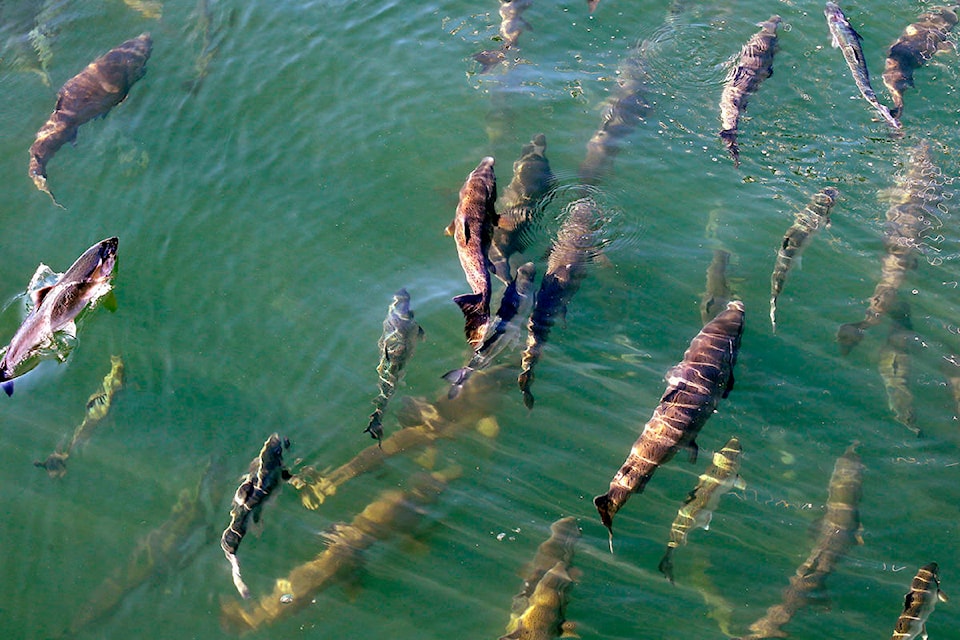In a recent article, Greg Knox, Executive Director of SkeenaWild Conservation Trust stated “Alaska’s constitution requires that conservation targets for their salmon populations are met before harvesting is allowed. It is irresponsible and unethical for Alaska to knowingly ignore these principles when it comes to Canada’s salmon.”
Claiming that Alaska’s management is knowingly irresponsible and unethical are strong allegations. We do not take lightly claims that we ignore sustained yield principles in our management.
Harvests of Canadian sockeye salmon in Alaska fisheries are managed under the terms of the Pacific Salmon Treaty.
READ MORE: Nothing to stop Alaska from harvesting all sockeye swimming to B.C., says conservation group
Treaty obligations for sockeye (outlined in Chapter 2, paragraph 6) apply to management of the Alaska District 104 purse seine fishery prior to week 31 (late July) and state that the fishery shall be managed to achieve a catch share of 2.45% of the annual allowable harvest of Nass and Skeena sockeye stocks prior to week 31. The Treaty sets the change in management priority at week 31 because the majority of Nass and Skeena sockeye have passed through Southeast Alaska by late July.
In accordance with Treaty principles of reducing interceptions while avoiding undue disruption of existing fisheries, the current Treaty is a compromise between allowing a high proportion of the Nass and Skeena runs to pass through the fishery and allowing Alaska to fish based on domestic pink salmon abundance in late July and August.
Contrary to claims made in the article, Alaska fisheries typically harvest a small proportion of the total Skeena River sockeye run each year. Skeena River sockeye pass through southern Southeast Alaska waters on their way back to the river, however, the overall harvest rate is far higher in Canadian fisheries than in Alaska. Thus, the bulk of the harvest pressure takes place in Canada and not Alaska.
In 2013, when the Skeena River sockeye run was only a half-million fish there were similar concerns about Alaska’s harvest. All Alaska fisheries combined harvested less than 4% of the Skeena River sockeye run for the year, while Canada harvested 6.5% while implementing severe restrictions on fisheries. That year the overall harvest rate was the lowest since the inception of the Treaty, which is exactly the result managers in both countries hoped for in an extremely poor year for this stock.
READ MORE: Advocates sound alarm on worst B.C. commercial fishing season in 50 years
The truth is that average harvest rates on Skeena River sockeye in all Alaska and Canadian fisheries combined have dropped by nearly half over the past three decades.
This winter Alaska will work with our Canadian counterparts in the Treaty process, as we always do, to ensure that Treaty obligations are met and that fisheries are being managed appropriately. Disagreements regarding management decisions are appropriately addressed in that arena and not in misleading articles.
In short, our management is abiding by the terms of the Pacific Salmon Treaty, is based on sustained yield principles, and is responsible and ethical. If we are to sustain our salmon runs, a better approach would be to lessen unfounded accusations and increase cooperation.
Doug Vincent-Lang
Commissioner, Alaska Department of Fish and Game
Pacific Salmon Commissioner
READ MORE: B.C. sockeye returns drop as official calls 2019 ‘extremely challenging’
The Northern View
Send The Newsroom email
Like the The Northern View on Facebook
Follow us on Twitter
